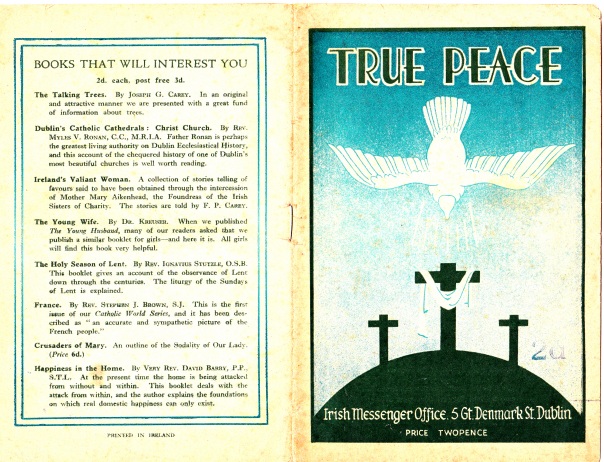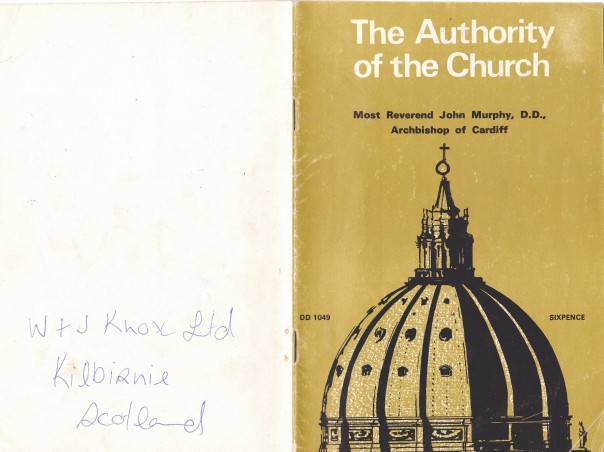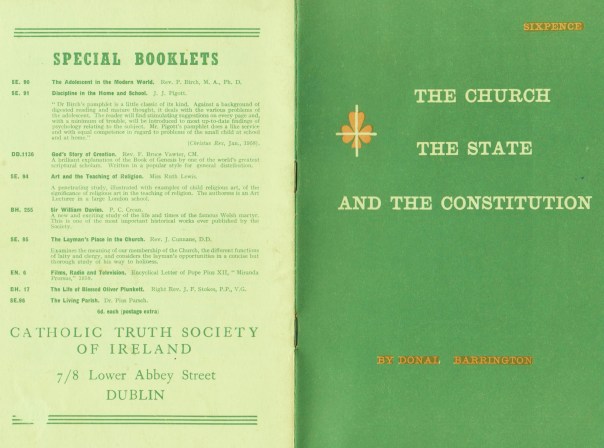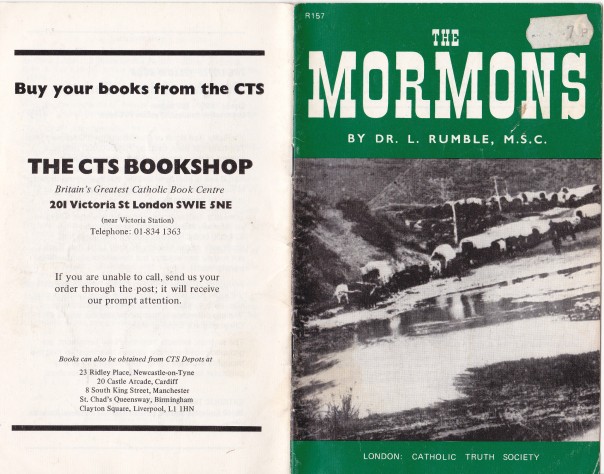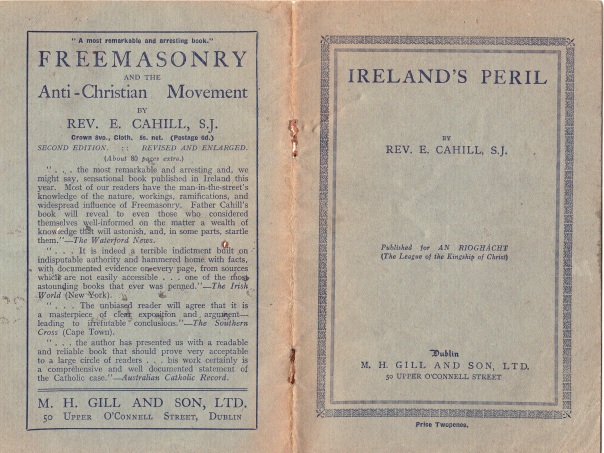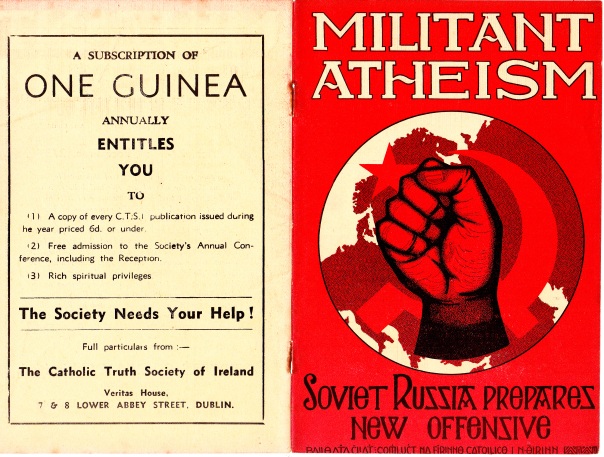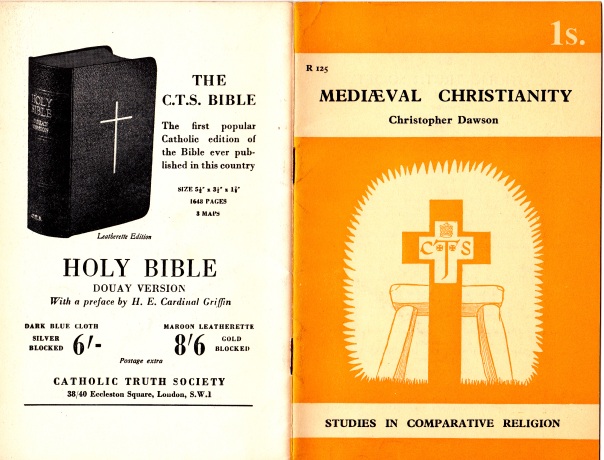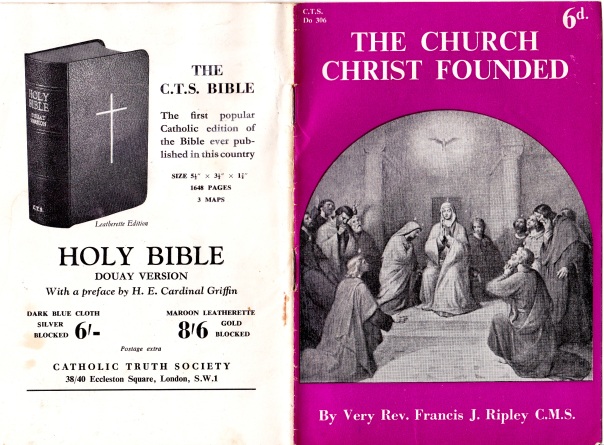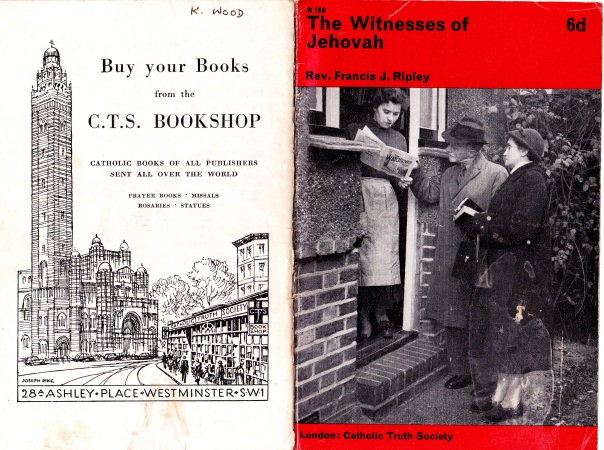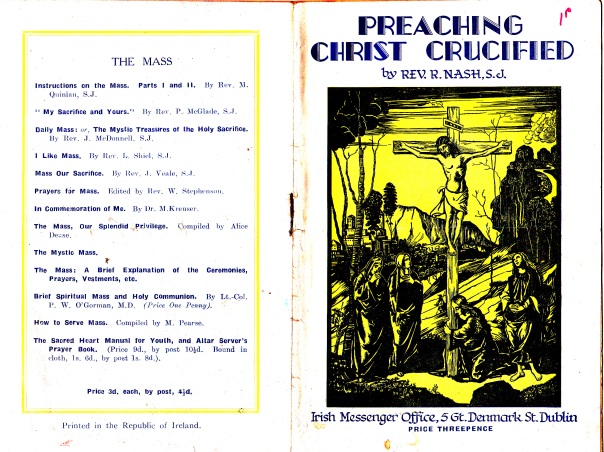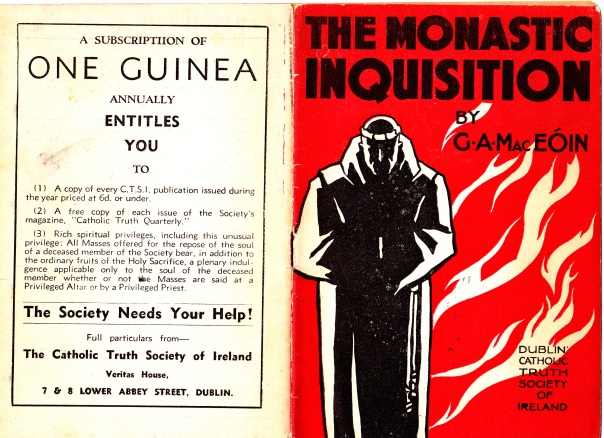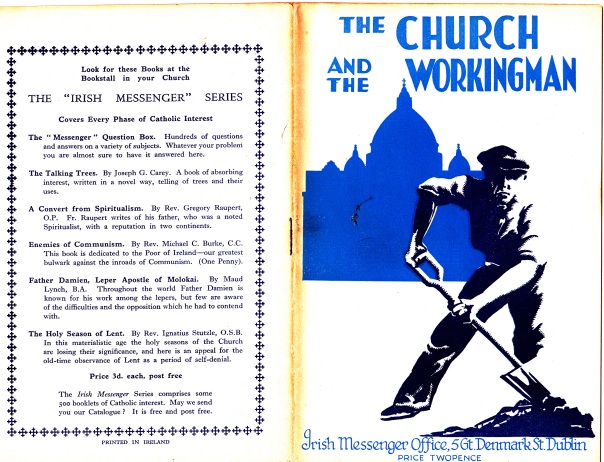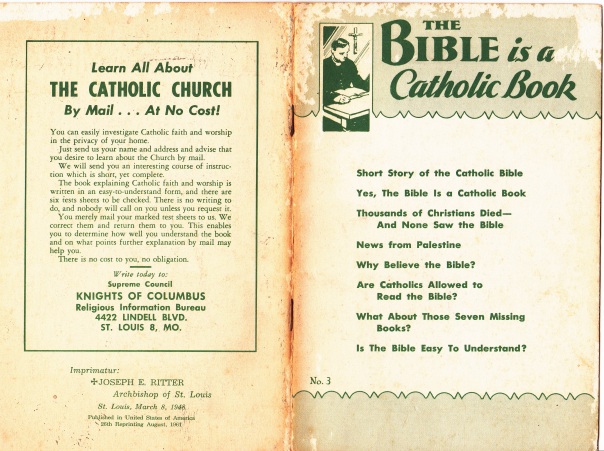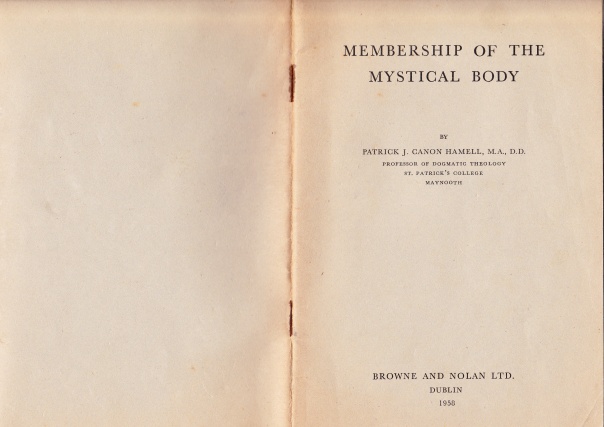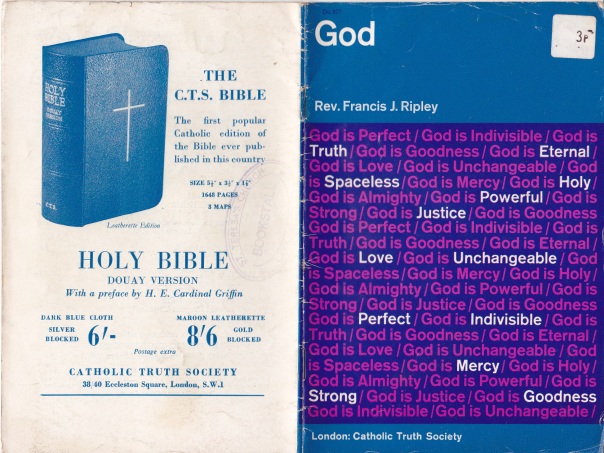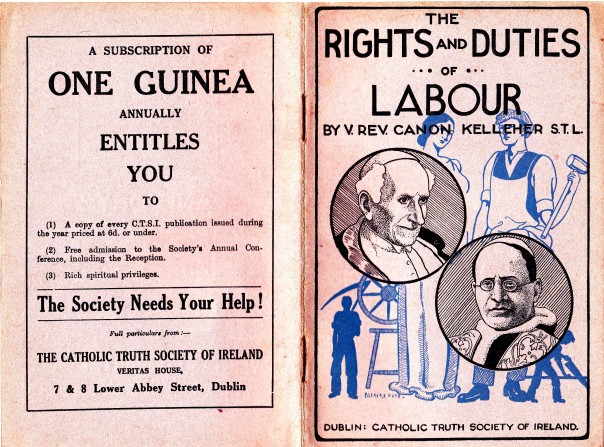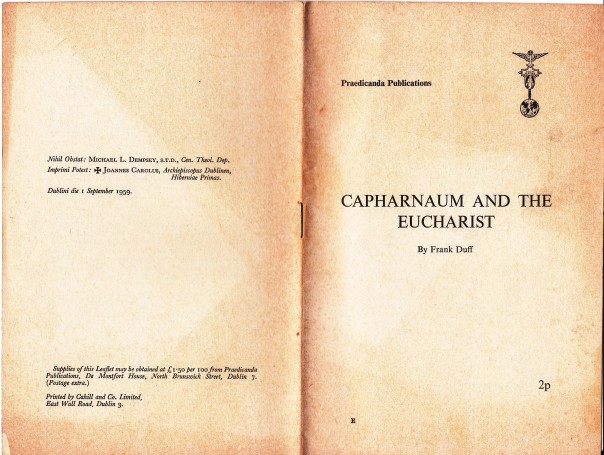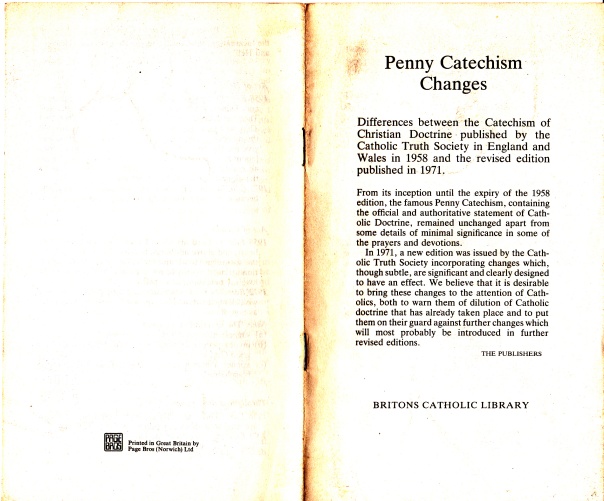‘Irish Times’ article lifts from this blog
The Irish Times has today published an article entitled Mass in the vernacular 50 years old this year by historian and journalist Brian Maye.
The article was clearly heavily influenced by this blog, which is not linked to or credited. For example the article states that Archbishop John Charles McQuaid “found it very difficult to adapt to the rapidly changing Catholic Church of the 1960s.” I wrote on 7 June 2011 that Archbishop McQuaid “found it very hard to adapt to the rapidly changing Church of the 1960s”. My post also stated that Archbishop McQuaid was “a lover of Latin language and culture”; the article in the Irish Times states that Archbishop McQuaid “loved the Latin language and culture”. I also quoted Xavier Rynn in that post in support of my characterisation of his attitude to liturgical reform; the substance of that very same quote is subsequently paraphrased by the author for the same purpose.
The Irish Times article states that:
The Columban missionary Fr Seán Coyle has remarked about the Irish Catholic hierarchy and Vatican II: “The Irish bishops seemed to convey a sense of obedience: ‘This is what we’ve been asked to do and we’ll do it.’ As I recall, they didn’t keep the people particularly well informed about the council. Those who did were journalists.”
This ‘remark’ was actually part of an interview that I did with Fr Seán Coyle and posted on this site on 28 July 2011.
The article extensively quotes an Irish episcopal statement on the liturgy from November 8th, 1964 and Archbishop McQuaid’s 1965 sermon on Vatican II – all of which I have posted in full on this blog. (The article also uses language characteristic of me: the article refers to “the Irish hierarchy’s” statement “on the introduction of the vernacular in the liturgy”; I titled the post “Irish Hierarchy’s Statement on the Introduction of the Vernacular in the Liturgy“.)
Incidentally, the author’s claim that “the first vernacular Masses were read in Irish Catholic churches on March 7th, 1965” is misleading; the Roman Canon remained only in Latin until December 1st 1968.
At least he was correct about the exact date of the introduction of the vernacular to the liturgy. I wonder where he might have got that information from.
Collapse of Catholic weddings in Ireland
This morning the Central Statistics Office released a new report with statistics on marriages and civil partnerships in 2014. It contained some figures of relevance for anyone interested in the state of Catholicism in modern Ireland.

There were 22,045 marriages registered in the Republic of Ireland in 2014. Catholic weddings accounted for 13,072 of all weddings (59.3%). Civil marriage ceremonies accounted for another 6,167 (28%). The Humanist Association of Ireland performed 895 (4.1%) marriages. Of the two largest Protestant denominations, there were 445 Church of Ireland (Anglican) marriage ceremonies (2%) and 81 Presbyterian (0.4%) ceremonies. The Spiritualist Union of Ireland performed 819 (3.7%) marriage ceremonies.

The proportion of weddings taking place in the Catholic Church has been in steady decline over the past 2 decades. In 2014 it was the lowest recorded in the history of the state and was down 3% from 2013.
In 1994 Catholic weddings accounted for 91.4% of all weddings while civil marriages were a mere 5.1% of the total. By 2004 Catholic weddings were only 76.2% of all weddings and civil marriages accounted for 20.4% of the total.
Read the rest of this entry
A Scot who shook the Maynooth progressives

Three years ago I uploaded to this blog a marvellous 1973 exposé of the post-conciliar disintegration of Ireland’s national seminary: The Scandal of Maynooth (which I believe is essential reading for anyone wanting to understand the roots of the decay of Irish Catholicism). The dossier provoked a massive media debate on the state of Irish Catholicism and its author Hamish Fraser engaged in a lengthy correspondence with supporters and critics in the Irish newspapers. Shortly afterwards he was interviewed by Des Moore of the Sunday Independent about his life, his communist past, his conversion to Catholicism and his sparring with the Irish bishops. The full text of the interview (published in the Sunday Independent on 9th December, 1973) is posted below:
Hamish Fraser, the Scottish ex-Communist who became a Catholic in 1948, recently attacked Maynooth College in his magazine “Approaches” and went on to describe some of the theological outpouring there as nothing short of being “The Scandal of Maynooth”. Inevitably his outburst caused Irish people to ask again: “Who is Hamish Fraser?” Sunday Independent writer Des Moore visited Frazer in his home in Scotland and apart from tracing his curious and often turbulent past, put some pungent questions to Fraser about the Catholic Church as he sees it today, particularly in the light of Vatican II. Fraser speaks out frankly here in what is bound to be described as one of the controversial interviews of the year.
Ice-bound roads led me through snow-mantled Scottish hills to the Ayrshire coast, to Saltcoats, and to the one-time Communist who has flung down the gauntlet to Maynooth and taken to task the Irish bishops.
The town in which he lives looks across the Firth of Clyde to the Island of Arran, its deserted promenade whipped by a winter wind, and 1 Waverley Place was a corner house in its sandstone suburbia.
He is a big one this Hamish Fraser — a burly man with blunt, uncompromising features and blunt, uncompromising talk. He wears a thick, hand-knit pullover over an open-necked shirt, and although he is 60, the hair brushed briskly back from a low forehead is still brown.
Read the rest of this entry
An English convert’s experience attending Mass in the Aran Islands in 1951

Daphne was a photographer, geologist, pilot and flight instructor
Daphne Pochin Mould (1920-2014) was raised as a High-Church Anglican in England but subsequently lost her faith to agnosticism. She converted to Catholicism in 1950 and a year later, she made a tour of Ireland, eventually settling in a small village in Co. Cork. Her book The Rock of Truth (published in 1953) recounts her conversion and subsequent tour of Ireland. I was particularly struck by her experience with the Latin liturgy in the Aran Islands (a set of rugged Irish-speaking islands off the west coast of Ireland) and her insights on liturgical language (p. 204):
The Aran Islands are Irish-speaking, and it was there, in the May of my first visit to Ireland that I began to understand how the Catholic Church combines an intimate homeliness with a universality that is above all national and racial boundaries. The islanders were chattering to each other in Irish, but the Mass was in Latin. Non-Catholics object strongly to the Latin liturgy of the Church, but to me it had always appealed; partly because of the glitter of the Latin itself, which is a language better shaped for liturgical use than English, and partly because, being a dead language, it has an essential timelessness, and the meaning of the words, unlike those, for instance, of the English Authorized translation of the Bible, remain static and unaltered. Now in Aran, myself without any Irish to speak of and trying to make contact with people who did not normally use English amongst themselves, I realized to the full another aspect of the Latin liturgy; it was linking people together over the hard barriers of different languages. I would have been completely lost if the Mass on the Aran Islands had been said in Irish; as it was, the Irish speakers and I met in a universal rite that we both understood. In the evenings I went to Rosary and Benediction with the islanders and saw the Church from yet another angle. They recited the Rosary in a thunderous growl in Irish; then, as Benediction began, a choir of small girls got up and sang in Latin. The Church was doing something that the Protestants have never dreamed of; she was alternately in the people’s homes, speaking to them in their own first language, and then catching them up into the Church of all the world and all the ages, the Latin linking Catholics everywhere across time and space.
Catholic magazine publishes a special issue on Ireland

An online Catholic magazine Regina has published a new special issue on Ireland, which is worth reading. It is largely concerned with the state of Irish Catholicism today and includes an interesting interview with Br. Tom Forde OFM Cap, a regular commenter here, as well as focusing on traditionalist movements in Ireland. It can be read online for free here. (h/t @SlaveckM)
Irish Hierarchy’s Statement on the Conclusion of the 1956 Maynooth Plenary Council
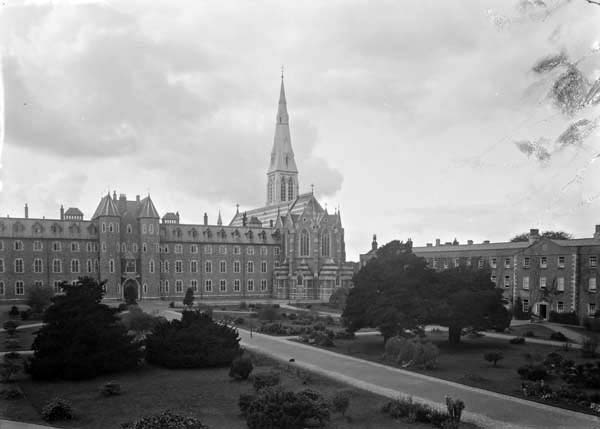
The Irish hierarchy issued the following statement at the conclusion of the Maynooth Plenary Council on 15th August, 1956:
By the authority of Our Holy Father the Pope and under the Presidency of the Papal Legate His Eminence Cardinal D’Alton the Irish Hierarchy, in association with representatives of the diocesan and religious clergy, has been holding at Maynooth a Plenary Council of the Irish Church. Humbly invoking the Holy Spirit to guide our deliberations and under the patronage of Our Lady, Seat Of Wisdom, we have been reviewing church legislation in this country in the light of changed circumstances since the last Plenary Council was held in 1927. Our decrees will be submitted to the Holy See for examination and approval. In due course they will be promulgated and attention will be directed to any modification they make in ecclesiastical law in Ireland.
The holding of the Plenary Council has entailed a survey of the condition of religion in Ireland today. We feel that it is proper to record on this occasion our profound sense of gratitude to God for the continuance of His abundant graces and favours and our appreciation of the manner in which our people are co-operating with them.
Read the rest of this entry
Catholic Writers of Today (1948)
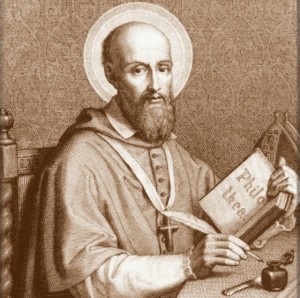
St. Francis de Sales – Patron Saint of Writers
The following paper was read by M.J. MacManus at the Catholic Book Week in Dublin on 15th October, 1948:
To attempt any survey of the Catholic writers of today is to enter a field so wide that nobody, unless he were possessed of encyclopaedic knowledge, could hope to walk through it surefootedly. The world is a large place and in it there are many lands; and in nearly all those lands there are Catholic writers. In some of them, of course, owing to the tyranny of evil circumstances, the Catholic voice is silent. In countries like Poland, Austria and Hungary, it may be taken for granted that Catholic writers have little or no access to the printing press. But there are other Catholic countries where work is undoubtedly being done which I must also pass over, because I am not in the least competent to speak of that work. In Italy and Spain and Portugal there are, we may be sure, poets and dramatists and novelists at work, but one hears little or nothing about them. One does not meet them even in translation. It is unlikely, to be sure, that at this moment Italy is producing a writer of the stature of Dante or Spain another Cervantes; but it is quite likely, in the present state of European chaos, with international contacts and communications extraordinarily difficult, that genius may, for some time to come, be hemmed in behind its native frontiers.
The field is therefore narrowed down very considerably and I have to content myself here with a glance at the work that is being done by Catholic writers in four countries — France, the United States, Britain and Ireland. If I put France first, it is because there, in my opinion, the Catholic spirit is being given its keenest interpretation and the Catholic tradition being upheld more strongly than elsewhere, and this by creative writers of the very first rank. France, in spite of an attitude of scepticism which seems to be a part of the national temperament, has been, and still remains, one of the pillars of Christendom. From its poets and novelists and philosophers, as well as from its great Gothic cathedrals, the Catholic atmosphere emanates so powerfully that it can be felt throughout Europe. If, every now and then, a writer of genius appears, like Zola, whose ideals are founded on something like scientific materialism, a reaction is always just round the corner. Zola himself, when he attempted themes which had no materialist basis, failed disastrously. In a novel like La Terre, for example, in which he attempted to depict the mind of the French peasant, there is no authenticity, for he left out the spiritual element, without an understanding of which — and without a certain sympathy with which — he could not hope to succeed. Writers like Daudet, Huysmans, René Bazin and Paul Bourget led the revolt against Zola-ism, and it has been extended in our time by others who, judged strictly from the literary standpoint, are greater than any of these — Mauriac, Claudel, Maritain, Bernanos and others.
Read the rest of this entry
The Irish Catholic Church in 1958 – A Statistical Overview

Seminarians strolling outside All Hallow’s College, Dublin, ca. 1955.
In January of this year, I posted a paper by Dr. Jeremiah Newman from 1958 on Priestly Vocations in Ireland. At that Conference in Vienna where he read the paper, he also gave a statistical supplement, which is posted below:
A. Priests and People in Ireland (Statistics from Irish Catholic Directory).
1. Total Catholic population of all Ireland: 3,257,400.
2. Total number of priests in Ireland (1956): 5,489.
3. Proportion of priests to people: 1 priest for every 593 Catholics.
4. Numbers of diocesan clergy and religious in Ireland:
1920 1940 1950 1956
Diocesan 3081 3354 3563 3772
Religious 754 1024 1481 1717
B. General Indications of Vocation (Priestly) Trend in Ireland.
1. Diocesan Clergy ordained — Totals for decades and averages per annum:
1920-30 1931-40 1941-50
Total 926 957 857
Average per annum 92 95 98
Archbishop Heenan of Westminster on the Council in 1964
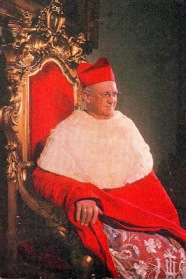
Archbishop John Heenan was Archbishop of Westminster (1963-1975). He was elevated to the cardinalate in 1965.
From the Irish Independent, 23rd October, 1964:
The Archbishop of Westminster, Most Rev. Dr. Heenan, said in the Vatican Council yesterday that the Council must speak out on the contraceptive pill, but should shelve the problem for three or four years.
He criticised a draft decree on the Church in the modern world as a “set of platitudes.”
He declared that the Council “will become a laughing stock in the eyes of the world if it now rushes breathlessly to a debate on world hunger, nuclear war and family life.”
Most Rev. Dr. Heenan singled out the draft decree’s section on birth control for attack and said that it did not state the Church’s teaching on the contraceptive pill. The draft decree should be handed to a new Commission composed of specialists from the laity and priests with long pastoral experience.
“Then, after three or four years, let the fourth and final session of the Council be convened to discuss all these social problems,” he suggested.
Belfast and the Bible
Thanks to the Redemptorist Library Project for this.
See also: Questions Posed by Belfast Protestants at Clonard Missions (1949-’59)
Fr Fahey and Irish Catholicism

Fr. Denis Fahey, C.S.Sp. (1883–1954)
The following article by Doris Manly was published in the January-February issue of the Ballintrillick Review in 1990. The Ballintrillick Review was a precursor of the modern Brandsma Review.
Fr Fahey had an influence on Irish Catholicism, but it does not seem to have been either wide or enduring. The fact that the Legion of Mary proved far more popular and lasting than Maria Duce suggests that his philosophy had limited appeal. The contrast is relevant because Frank Duff very firmly rejected Fr Fahey’s ideas about the Jews: in fact, he actually expelled from the Legion some people who insisted on putting those views forward under its auspices.
Read the rest of this entry
Militant Atheism: Soviet Russia Prepares New Offensive
See also: Communism – A Will O’ The Wisp
‘Science under Communism’ in The Irish Rosary, July-August, 1955
Irish Hierarchy’s Statement on the Persecution of the Church in Poland (1953)
The Anti-God Front of Bolshevism
The Land of Make Believe
Marx the Man: An Idol with Feet of Clay
‘Indo-China: Catholic and Communist’ in The Irish Monthly, May, 1953
Communism and the Home
Communism and Religion
Modern Communism
The Theory and Objective of Bolshevism
Communism from the Inside
A Christian Alternative to Communism and Fascism by Rev. Con Lucey, later Bishop of Cork and Ross
Bishop Daniel Cohalan on the Persecution of the Church in Eastern Europe
Persecution of Irish Priests in China: Letter from Bishop Edward Galvin (1952)
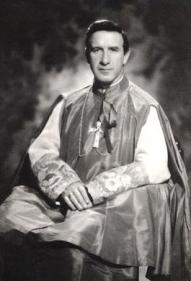
Bishop Edward Galvin was a co-founder of the Maynooth Mission to China (known today as the Columbans) in 1916 and was the first Bishop of Hanyang. On 19th September 1952 he was expelled from China by the new communist government and was deported to British Hong Kong, whence he wrote the following letter. It is dated 1st October 1952 and was sent to the Very Rev. Timothy Connolly, the Superior General of the Maynooth Mission to China at St Columban’s College, Dalgan Park, Navan, Co. Meath.
Dear Father Connolly,
Let me thank you very sincerely for your cablegram of good wishes. I heard the sentence of expulsion on the morning of September 15 at police headquarters in Hankow. I was then taken back to my own city of Hanyang under escort and held there in my rooms under strict supervision until the afternoon of the 17th, when I was moved back to police headquarters in Hankow, put on board a train in Wuchang shortly before midnight and escorted by three policemen to the Hong Kong border, where I crossed on the 19th. There I was met by Father McNamara.
The Internuncio to China, Monsignor Riberi, who also lives in this haven of hospitality, and who has been very kind, has asked me to write the story of my expulsion and I am trying to do it, though still very tired.
Priestly Vocations in Ireland (1958)
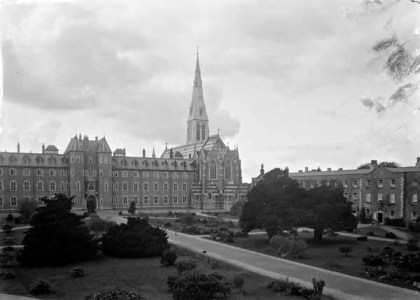
See also: Priests and People in Ireland (1957) and The Catholic Church in Contemporary Ireland (1931)
The following paper was read by Dr Jeremiah Newman to the First International Conference on Priestly Vocations in Europe at Vienna, Austria on 10th October 1958. Dr Newman was then Professor of Sociology at St Patrick’s College, Maynooth. He later served as President of the college (1968-1974) and Bishop of Limerick (1974-1995).
It is indeed a privilege for me to have been asked to address this Conference on Priestly Vocations in Europe. It is especially so because of the fact that the Conference is being held in the Schottenstift, founded in Vienna by Irish missionaries some eight hundred years ago. Although for this reason I am glad to be here, we would all be happier if this Conference were unnecessary. Unfortunately it is only too necessary in face of the acute shortage of priests which has overcome certain areas of Europe. My country is luckily in the position of being numbered amongst those countries that have sufficient priests. You know, however, that it was not always so, that the Catholic people of Ireland suffered centuries of persecution, long years during which priests were in short supply, hunted as criminals, with a price on their heads. I would like to think that my presence here, as representative of the present-day Catholicism of Ireland, may be a source of hope and confidence in the future for those of you who come from countries which need this.
It has been suggested to me that I should speak on the subject of the missionary duty of a country that is rich in priests. My country is rightly listed in this category. The statistical supplement to this paper gives you an idea of the great numbers of priestly vocations which she produces. It shows too the great extent of her overseas missionary work, both in lands in which the Church is fully established and in those that are still under the jurisdiction of Propaganda. I feel, however, that some of you are of the opinion that there is much more which Ireland could do. Indeed I have no doubt that some of you are hoping for a return of Irish priests to the continent. For my part, I believe that the first duty of a country rich in vocations is to explain to others how she manages to secure them. We know well that the ultimate reason is grace. But there are a whole host of human factors — such as social and economic — that play the important role of nature helping grace. The study of these constitutes the contemporary science of Religious Sociology, of which the Sociology of Vocations is a part. I have been invited here in the capacity of a sociologist and it is on the Sociology of Vocations that I propose to speak. The time allotted for my paper is brief, so I shall have to be very summary in the exposition of my points.
Read the rest of this entry
Spanish Civil War: An Old Letter to ‘The Times’
I came across this old letter to the editor of The Times of London in an old pamphlet today and thought it might be of interest. It was in the form of a press cutting and I am unsure of the date. (Any suggestions would be most appreciatively received.)

See also: For God and Spain (1936)
The Mass and the People in Irish Parishes (1961)
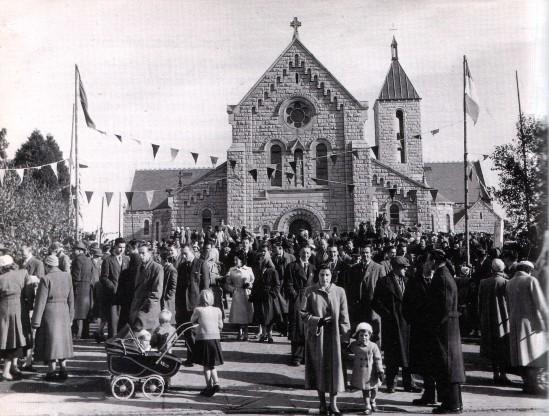
Parishioners leaving Mass at St. Canice’s Church in Finglas, 1950s
[See also: The Canon of the Mass and The Dialogue Mass in Ireland: Letter of Fr. Clifford Howell, S.J. to Alfred O’Rahilly (1953)]
The following paper was read by Bishop (later Cardinal Archbishop) William Conway to the eighth annual Irish Liturgical Congress at Glenstal Abbey in April 1961. Bishop Conway was then an auxiliary of Armagh, the Irish primatial see. He served as Archbishop of Armagh and Primate of all Ireland from 1963 until 1977.
I think it is always useful, in beginning the kind of enquiry with which we are concerned this morning, to ask ourselves the simple question: what are we aiming at? What is the target? What, in the present instance, is the object of the vast effort being made throughout the Church to promote what is called “the participation of the faithful in the Mass”? It is extraordinary, or so it seems to me, how often in matters of this kind one can be slightly mistaken as to where the target really lies, how a vast movement can arise, and gather momentum and roll along, without those engaged in it raising their heads very often to have another look at the final objective; how easily we may end up by mistaking an important intermediate goal for the final goal — mistaking ends for means, in other words — or directing our energies towards an objective that is slightly to the left or slightly to the right of the goal for which we originally set out. I do not think that this has happened as yet in the matter with which we are concerned today; but it could happen, and in any event it is a useful exercise to check the sights from time to time and, where necessary, to make minute corrections.
In the case of participation in the Mass I do not think that it is difficult to identify the final end. It is Catholic teaching that in the Mass much more happens than the changing of the bread and wine into the Body and Blood of Our Lord. The Body and Blood of Our Lord, newly come upon the altar, are offered in sacrifice to the Heavenly Father and that sacrifice is one with the Sacrifice of the Cross “sola ratione offerendi diversa”. Moreover, as the encyclical Mediator Dei teaches, the faithful “in their own way” participate in the offering of that sacrifice; “they offer the sacrifice through the priest and…in a certain sense, with him”.
Read the rest of this entry
Irish Schools’ Manuscript Collection (1937-’38) Goes Online
Press release from University College Dublin:
Materials from one of world’s largest folklore collections now available online
A new website featuring some 64,000 hand-written pages of folklore and local history recorded in 1937-38 by Irish schoolchildren in counties Dublin, Mayo, Donegal and Waterford, Duchas.ie has been officially launched by the Minister of State at the Department of Arts, Heritage and the Gaeltacht, Dinny McGinley TD.
The digital collection is part of the Schools’ Manuscript Collection held at the National Folklore Collection at University College Dublin. The full-collection consists of some 500,000 pages of material recorded by some 50,000 school children in over 5,000 schools in 26 participating counties.
Legal Disabilities of the Catholic Church in Ireland

Note: the author was appointed Bishop of Galway and Kilmacduagh in 1937. See also his 1939 anti-Nazi pastoral The Worship of the State, his introductory pamphlet on the Commission on Vocational Organisation (he was chair of the Commission) and his statement on the prosecution of Bishop Pietro Fiordelli (1958).
The Irish Bishops and the Legalisation of Contraception (1978): Mgr Cremin Speaks Out. Full Text of Interview.
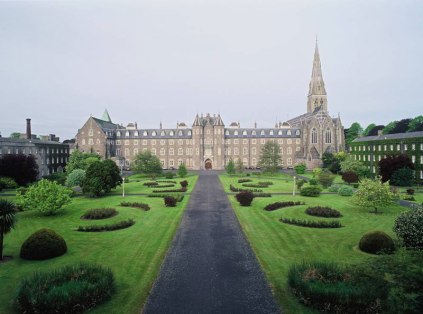
Monsignor Patrick Francis Cremin gave a four-part interview to the Irish Independent in 1978. The first, second and fourth parts of the interview were largely dedicated to criticising the Irish hierarchy for their stance on the legalisation of contraception. They are all posted in full below.
The third part of the interview was concerned with the radical liberal drift at Maynooth seminary and in the Irish Church more broadly. It can be read in full here. (NB: see also the earlier explosive dossier The Scandal of Maynooth from 1973 — Mgr Cremin was one of the dossier’s sources.)
From the Irish Independent, 8th November, 1978:
By JOSEPH POWER
Our Religious Affairs Correspondent
The fact that the Irish bishops did not explicitly express disapproval of legalisation of contraceptives has disturbed many priests and people, a leading Maynooth theologian claims today.
The bishops’ statement on Proposed Legislation Dealing With Family Planning and Contraception last April has been understood as giving a green light for legislation, says Right Rev. Monsignor Patrick Francis Cremin, professor of moral theology and of canon law at St. Patrick’s College, Maynooth.
In an exclusive interview with the Irish Independent, he said there is no discernible warning light showing against the proposed legislation.
The Catholic Church in Contemporary Ireland (1931)

3 Benedictine nuns gathering peat in a bog in Co. Mayo, ca. 1920s.
See also: Priests and People in Ireland (1957)
The following paper was read by Dr. James F. Kenney at the 12th annual meeting of the American Catholic Historical Association on 29th December, 1931, at Minneapolis, Minnesota, USA:
In the county of Antrim, on the north coast of Ireland, about ten miles to the east of the Giant’s Causeway, lies the little town of Ballycastle. It grew up in a valley running inland southwest from a small bay, not far from one of the castles of the MacDonnells of the Glens. To the north the town is sheltered from the sea by high ground, where the Catholic church and other religious institutions now stand; to the south rises the dark mountain of Knocklayd, 1695 feet high, one of the more prominent of the Antrim hills. The MacDonnells of the Glens were a branch of the family of the Lords of the Isles, who, about the beginning of the fifteenth century, obtained by marriage a domain in this northeast corner of Ireland. Ballycastle is an out-settlement from the Glens, and, like them, has a considerable Catholic population. The MacDonnells, earls and marquesses of Antrim, although becoming Protestants themselves, protected their Catholic dependents, with the result that today, in Protestant Northeast Ireland, this extreme northeast corner, the Glens of Antrim, is held by a Catholic community.
Read the rest of this entry
‘Our Catholic Life’ (1954-’70)
The team at Limerick City Library has just digitised the entire collection of Our Catholic Life from 1954 to 1970. Our Catholic Life was the official magazine of the diocese of Limerick and contains many items of historical and theological interest.
Prayer Request
I’d ask you kindly to pray for my mother, who has been diagnosed with ovarian cancer (prognosis unknown yet). Please pray for her health, for a successful treatment and ultimate recovery. Thank you.

